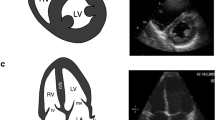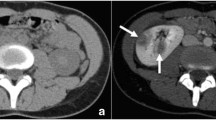Abstract
Objective
Blunt abdominal trauma is a diagnostic challenge for emergency physicians and ultrasonography is one of the diagnostic tools used in this type of injuries. The aim of this study was to evaluate the diagnostic value of ultrasonographies performed by emergency physicians and radiologists.
Methods
This prospective diagnostic study was performed in the emergency departments of two trauma centers in Iran during a period of 12 months. The subjects were all patients with blunt abdominal trauma that were candidated for abdominopelvic computed tomography (CT) scanning in our emergency departments. The results of focused assessment with sonography for trauma (FAST) performed by emergency physicians and radiologists were compared blindly with the results of CT scans performed by radiologists. The sensitivity, specificity, and predictive values of diagnosis for different abdominal anatomic areas were calculated.
Results
In total, 450 patients undergoing FAST and CT scanning were studied. The sensitivity of radiologists’ diagnoses for Morison’s, splenorenal, perivesical, and pleural effusion areas were, respectively, 88.0, 70.0, 38.0, and 30.0 %. The corresponding values for emergency physicians’ diagnoses were, respectively, 82.0, 60.0, 28.0, and 30.0 %. The specificity of radiologists’ diagnoses in the mentioned areas were, respectively, 98.9, 100, 93.1, and 100 %, and for emergency physicians, they were, respectively, 98.9, 100, 96.0, and 100 %.
Conclusion
Emergency physicians showed a promising performance in applying FAST in blunt abdominal trauma. The specificity of ultrasonographic diagnosis in the emergency physicians group and the radiologists group were comparable, while radiologists showed a higher performance regarding the sensitivity of the ultrasonographic diagnosis.

Similar content being viewed by others
References
Thourani VH, Pettitt BJ, Schmidt JA, Cooper WA, Rozycki GS. Validation of surgeon-performed emergency abdominal ultrasonography in pediatric trauma patients. J Pediatr Surg. 1998;33:322–8.
Heller M. Emergency ultrasound: out of the acoustic shadows. Ann Emerg Med. 1997;29:380–2.
Jehle D, Davis E, Evans T, Harchelroad F, Martin M, Zaiser K, Lucid J. Emergency department sonography by emergency physicians. Am J Emerg Med. 1989;7:605–11.
Trott A. Ultrasonography in emergency medicine. J Emerg Med. 1984;1:549.
Turnbull TJ, Dymowski JJ. Emergency department use of hand-held Doppler ultrasonography. Am J Emerg Med. 1989;7:209–15.
Abbott J. Emergency department ultrasound: is it really time for real time? J Emerg Med. 1990;8:491–2.
Sternbach G. Abdominal ultrasound in emergency medicine. J Emerg Med. 1984;1:547–8.
Cook T, Roepke T. Prevalence and structure of ultrasound curricula in emergency medicine residencies. J Emerg Med. 1998;16:655–7.
Counselman FL, Sanders A, Slovis CM, Danzl D, Binder LS, Perina DG. The status of bedside ultrasonography training in emergency medicine residency programs. Acad Emerg Med. 2003;10:37–42.
Perry JF Jr. A five-year survey of 152 acute abdominal injuries. J Trauma. 1965;5:53–61.
Tsui CL, Fung HT, Chung KL, Kam CW. Focused abdominal sonography for trauma in the emergency department for blunt abdominal trauma. Int J Emerg Med. 2008;1:183–7.
Coley BD, Mutabagani KH, Martin LC, Zumberge N, Cooney DR, Caniano DA, Besner GE, Groner JI, Shiels WE 2nd. Focused abdominal sonography for trauma (FAST) in children with blunt abdominal trauma. J Trauma. 2000;48:902–6.
Rose JS, Levitt MA, Porter J, Hutson A, Greenholtz J, Nobay F, Hilty W. Does the presence of ultrasound really affect computed tomographic scan use? A prospective randomized trial of ultrasound in trauma. J Trauma. 2001;51:545–50.
McGahan JP, Rose J, Coates TL, Wisner DH, Newberry P. Use of ultrasonography in the patient with acute abdominal trauma. J Ultrasound Med. 1997;16:653–62.
Tintinalli JE, Stapczynski JS, Ma OJ, Cline DM, Cydulka RK, Meckler GD. Tintinalli’s emergency medicine: a comprehensive study guide. 7th ed. New York: McGraw-Hill; 2011. p. 1765-1766.
McGahan JP, Wang L, Richards JR. From the RSNA refresher courses: focused abdominal US for trauma. Radiographics. 2001;21:S191–9.
Boulanger BR, McLellan BA, Brenneman FD, Ochoa J, Kirkpatrick AW. Prospective evidence of the superiority of a sonography-based algorithm in the assessment of blunt abdominal injury. J Trauma. 1999;47:632–7.
Buzzas GR, Kern SJ, Smith RS, Harrison PB, Helmer SD, Reed JA. A comparison of sonographic examinations for trauma performed by surgeons and radiologists. J Trauma. 1998;44:604–6.
Tsui CL, Fung HT, Chung KL, Kam CW. Potential limitation of FAST. J Trauma. 1997;42(4):617–22.
Dolich MO, McKenney MG, Varela JE, Compton RP, McKenney KL, Cohn SM. 2,576 ultrasounds for blunt abdominal trauma. J Trauma. 2001;50(1):108–12.
Goldberg GG. Evaluation of ascites by ultrasound. Radiology. 1970;96(15):217–21.
Holmes JF, Harris D, Battistella FD. Performance of abdominal ultrasonography in blunt trauma patients with out-of-hospital or emergency department hypotension. Ann Emerg Med. 2004;43(3):354–61.
Branney SW, Wolfe RE, Moore EE, Albert NP, Heinig M, Mestek M, Eule J. Quantitative sensitivity of ultrasound in detecting free intraperitoneal fluid. J Trauma. 1995;39(2):375–80.
Gracias VH, Frankel HL, Gupta R, Malcynski J, Gandhi R, Collazzo L, Nisenbaum H, Schwab CW. Defining the learning curve for the Focused Abdominal Sonogram for Trauma (FAST) examination: implications for credentialing. Am Surg. 2001;67(4):364–8.
Acknowledgments
The authors confirm that were not in receipt of any grants.
Conflict of interest
There are no potential conflicts of interest for each of the authors.
Author information
Authors and Affiliations
Corresponding author
Rights and permissions
About this article
Cite this article
Tajoddini, S., Shams Vahdati, S. Ultrasonographic diagnosis of abdominal free fluid: accuracy comparison of emergency physicians and radiologists. Eur J Trauma Emerg Surg 39, 9–13 (2013). https://doi.org/10.1007/s00068-012-0219-5
Received:
Accepted:
Published:
Issue Date:
DOI: https://doi.org/10.1007/s00068-012-0219-5




